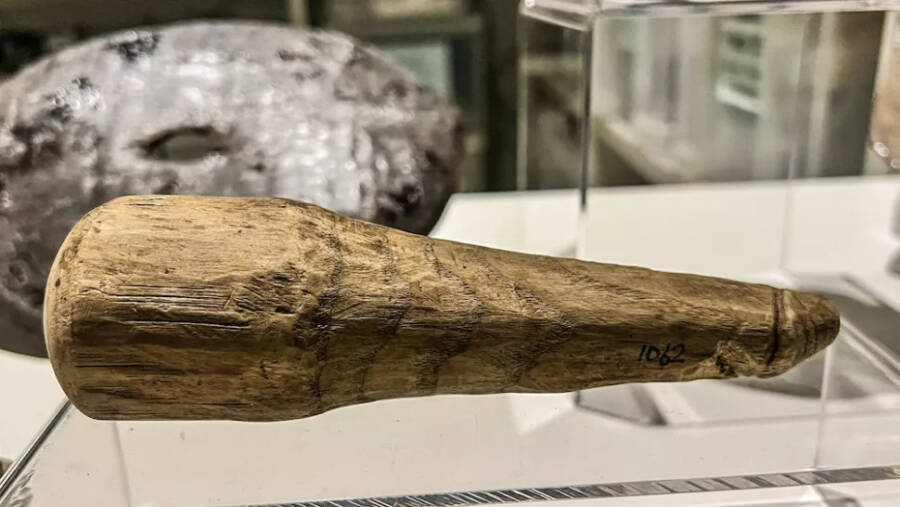In 1992, a remarkable discovery sent shockwaves through the archaeological community. Near Hadrian’s Wall in Northern England, researchers stumbled upon a treasure trove of ancient artifacts, among them a mysterious wooden object concealed in a ditch outside of Vindolanda, a Roman auxiliary fort.
Unveiling the Enigma
Initially mistaken for a mundane darning tool, the object has since been reclassified as a carved phallus, potentially the first Roman-era sex toy ever unearthed. This revelation, documented in the journal Antiquity, has sparked profound intrigue and speculation.
Shedding Light on Ancient Practices

As we delve into the significance of this find, it becomes evident that it transcends mere novelty. This artifact offers a unique glimpse into the intimate aspects of Roman society, shedding light on their customs, beliefs, and perhaps even their taboos.
Crafting Intimacy: The Making of a Relic
Measuring 6.3 inches, the wooden phallus boasts meticulous carvings, indicating a skilled artisan at work. While its primary function remains subject to debate, its craftsmanship speaks volumes about the artistry and ingenuity of ancient craftsmen.
Unraveling the Mysteries: A Multifaceted Artifact
While the object’s purpose may seem straightforward, its true significance eludes easy categorization. Beyond its potential role as a sexual aid, it could have served diverse functions, from symbolic talisman to culinary utensil.
Contextualizing History: Power Dynamics and Symbolism
Examining the broader cultural context reveals intriguing nuances. The phallus symbolized more than mere sexual pleasure; it embodied notions of power, fortune, and even coercion. Its presence within the Roman world hints at complex social dynamics and power structures.
A Glimpse into the Past, A Question for the Future
Today, this enigmatic artifact stands proudly on display at the Vindolanda museum, a testament to the enduring mysteries of history. As researchers continue their quest for understanding, one can’t help but wonder: What other secrets lie buried beneath the sands of time?
FAQs
- Was the object definitively identified as a sex toy? While researchers lean towards this interpretation, the object’s exact purpose remains speculative.
- Why was the object initially misidentified? The organic materials used in its construction contributed to the initial confusion, highlighting the challenges of archaeological interpretation.
- What implications does this discovery have for our understanding of ancient societies? It prompts us to reconsider preconceived notions and delve deeper into the complexities of ancient culture and sexuality.
- Are there similar artifacts awaiting discovery elsewhere? The possibility exists, fueling ongoing explorations and excavations around the globe.
- How does this discovery impact modern perceptions of ancient civilizations? It serves as a poignant reminder that human experiences, desires, and ingenuity are timeless and universal.



